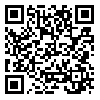Thu, Oct 9, 2025
Volume 35, Issue 3 (6-2025)
JHNM 2025, 35(3): 188-199 |
Back to browse issues page
Download citation:
BibTeX | RIS | EndNote | Medlars | ProCite | Reference Manager | RefWorks
Send citation to:



BibTeX | RIS | EndNote | Medlars | ProCite | Reference Manager | RefWorks
Send citation to:
bazzi A, Pouralizadeh M, ebadi A, Kazemnezhadleyli E. Educational Leadership Styles of Nursing Educators in Clinical Practice: A Qualitative Content Analysis. JHNM 2025; 35 (3) :188-199
URL: http://hnmj.gums.ac.ir/article-1-2471-en.html
URL: http://hnmj.gums.ac.ir/article-1-2471-en.html
1- PhD. Candidate, Department of Medical Surgical Nursing, School of Nursing and Midwifery, Guilan University of Medical Sciences, Rasht, Iran.
2- Associate Professor, Department of Nursing, School of Nursing and Midwifery, Guilan University of Medical Sciences, Rasht, Iran. ,pouralizadehm@gmail.com
3- Professor, Nursing Care Research Center, Clinical Sciences Institute, Baqiyatallah University of Medical Sciences, Tehran, Iran.
4- Associate Professor, Department of Biostatistics, School of Nursing and Midwifery, Guilan University of Medical Sciences, Rasht, Iran.
2- Associate Professor, Department of Nursing, School of Nursing and Midwifery, Guilan University of Medical Sciences, Rasht, Iran. ,
3- Professor, Nursing Care Research Center, Clinical Sciences Institute, Baqiyatallah University of Medical Sciences, Tehran, Iran.
4- Associate Professor, Department of Biostatistics, School of Nursing and Midwifery, Guilan University of Medical Sciences, Rasht, Iran.
Abstract: (331 Views)
Introduction: The importance of educational leadership in nursing has increased alongside the growing complexity of healthcare environments, necessitating innovative educational strategies, collaboration, and effective communication between educators and nursing students.
Objective: This study aimed to explore the educational leadership styles exhibited by clinical nursing faculty in clinical practice settings.
Materials and Methods: This qualitative study, employing a conventional content analysis approach, was conducted between July and October 2024 at Guilan University of Medical Sciences, Rasht City, Iran. A total of 11 participants, including nursing faculty members and nursing students, were selected through purposive sampling. Data were collected via semi-structured interviews and data collection continued until saturation was achieved.Data analyzed was done based on the method proposed by Graneheim and Lundman. MAXQDA software, version 2020 was utilized for systematic data management and analysis.
Results: Data analysis of interviews with 11 participants (5 men and 6 women, including nursing faculties, educational supervisors, and undergraduate and postgraduate students with diverse clinical experience and academic roles) identified the following leadership styles in 6 categories and 13 subcategories. The category of “self-centeredness and non-constructive behaviors in instructional setting “ included “intellectual arrogance,” “injustice,” and “humiliation.” The category of “preemptive compassion” consisted of “benevolent deterrence” and “patronizing attitude.” The “uncommitted leadership” category included “indifference towards helping students achieve educational goals” and “indifference to motivating and restoring student rights.” The “orderly leadership” consisted of “adherence to curriculum and educational regulations” and “resistance to change.” The category of “supporter in personal development” included “facilitation and support for students” and “fostering individual attitudes and motivation.” The category of “sociable leadership” consisted of “communication with others to facilitate education” and “inspirational leadership.”
Conclusion: This study revealed negative and positive leadership styles among clinical nursing education leaders. While some exhibited self-centeredness, injustice, and resistance to change, others demonstrated supportive, communicative, and inspirational behaviors that effectively promoted students’ personal growth and motivation.
Objective: This study aimed to explore the educational leadership styles exhibited by clinical nursing faculty in clinical practice settings.
Materials and Methods: This qualitative study, employing a conventional content analysis approach, was conducted between July and October 2024 at Guilan University of Medical Sciences, Rasht City, Iran. A total of 11 participants, including nursing faculty members and nursing students, were selected through purposive sampling. Data were collected via semi-structured interviews and data collection continued until saturation was achieved.Data analyzed was done based on the method proposed by Graneheim and Lundman. MAXQDA software, version 2020 was utilized for systematic data management and analysis.
Results: Data analysis of interviews with 11 participants (5 men and 6 women, including nursing faculties, educational supervisors, and undergraduate and postgraduate students with diverse clinical experience and academic roles) identified the following leadership styles in 6 categories and 13 subcategories. The category of “self-centeredness and non-constructive behaviors in instructional setting “ included “intellectual arrogance,” “injustice,” and “humiliation.” The category of “preemptive compassion” consisted of “benevolent deterrence” and “patronizing attitude.” The “uncommitted leadership” category included “indifference towards helping students achieve educational goals” and “indifference to motivating and restoring student rights.” The “orderly leadership” consisted of “adherence to curriculum and educational regulations” and “resistance to change.” The category of “supporter in personal development” included “facilitation and support for students” and “fostering individual attitudes and motivation.” The category of “sociable leadership” consisted of “communication with others to facilitate education” and “inspirational leadership.”
Conclusion: This study revealed negative and positive leadership styles among clinical nursing education leaders. While some exhibited self-centeredness, injustice, and resistance to change, others demonstrated supportive, communicative, and inspirational behaviors that effectively promoted students’ personal growth and motivation.
Article Type : Research |
Subject:
General
Received: 2024/12/21 | Accepted: 2025/04/30 | Published: 2025/06/10
Received: 2024/12/21 | Accepted: 2025/04/30 | Published: 2025/06/10
Send email to the article author
| Rights and permissions | |
 | This work is licensed under a Creative Commons Attribution-NonCommercial 4.0 International License. |






